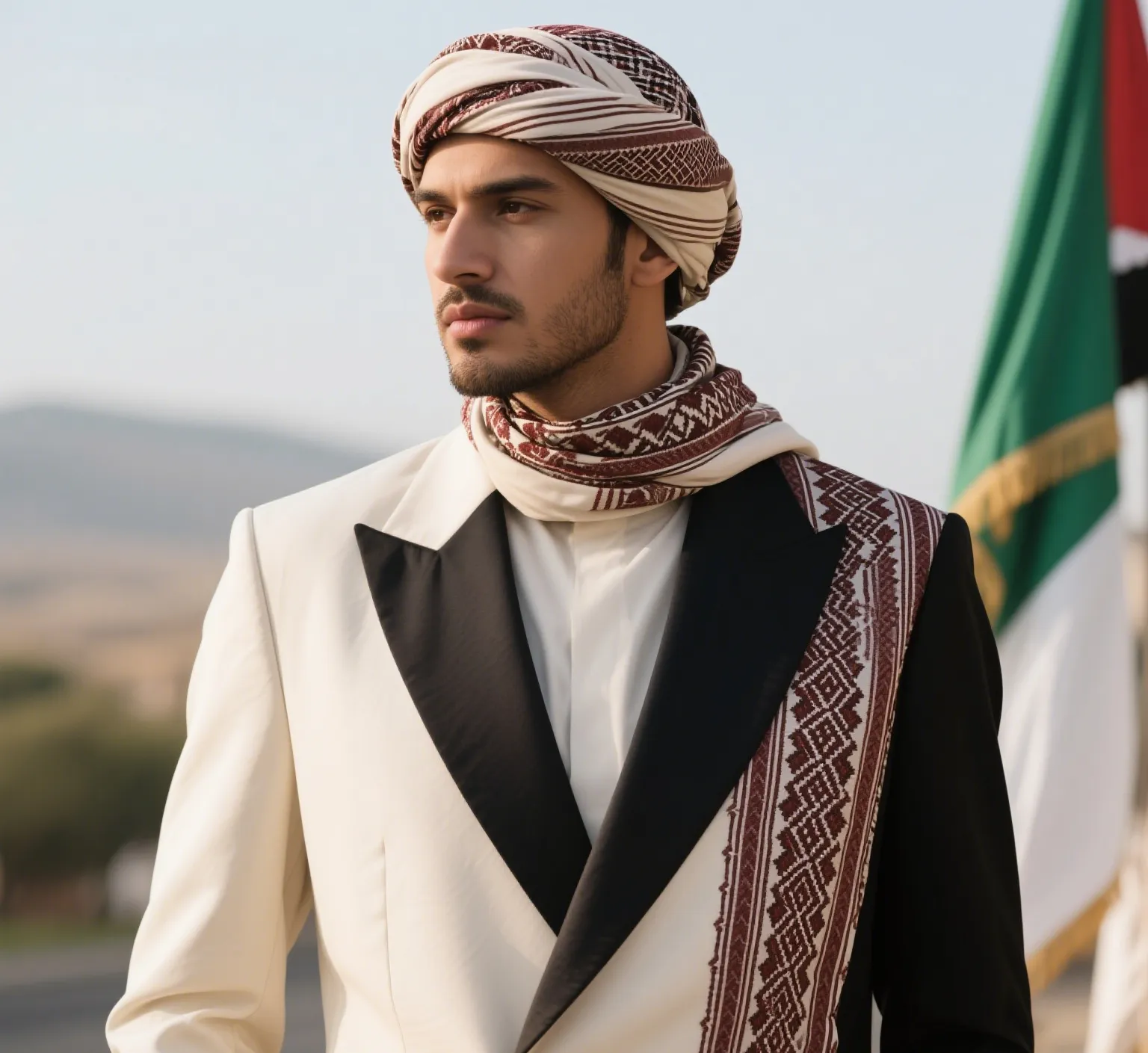أبريل . 21, 2025 14:51 العودة إلى القائمة
A Variety of Arab Men's Traditional Costumes
Clothing is a core element of any culture, conveying signals about a person’s personality, identity, and social standing. There are twenty‑two Arab countries, each with its own men’s traditional dress. North African and Levantine nations—having absorbed more Western influences—often favor modern attire, while Gulf states tend to maintain their traditional garments more rigorously.
1. The Thobe (Long Robe)
The thobe traces its origins back to Roman times. It’s a loose, ankle‑length robe—originally worn by pilgrims on their way to Mecca, which gave it a sacred association. As the staple garment for Arab men, the thobe evolved in response to geography and climate: in hot, dusty deserts, it shields the body from direct sun while its open, single‑piece construction promotes airflow. Beyond cooling, its design also keeps out sand. The loose fit allows freedom of movement, and when bowing in prayer, the long hem modestly covers the rear. Summer thobes are typically made of lightweight cotton or silk; winter versions use warmer fabrics like wool or cashmere. Today, thobes come in a wide array of colors and styles, varying by country and region. On Fridays, at engagements, or at formal gatherings, Arab men invariably don their thobes—symbolizing both cultural heritage and personal dignity.
2. The Headscarf (Keffiyeh/Ghutrah)
Arab men traditionally fold a square scarf in half into a triangle and drape it over the head. Even before Islam, these Arabic men's scarves protected wearers from the sun, sand, and wind. Originally available only in beige or white, modern versions come in patterns like black‑and‑white or red‑and‑white checks. White scarves are common in summer; darker hues in winter. Beyond practicality, the headscarf carries political and cultural weight, representing masculinity, maturity, and nationalism. Among Bedouin tribes, boys receive their first scarf from their fathers around age 15 as part of their coming‑of‑age education.
3. The Agal (Headband)
The agal—a cord worn atop the headscarf—dates back over four thousand years. While its exact origins are debated, it’s widely believed to have evolved from the shepherd’s crook. Before oil wealth, Arab nomads herded sheep and camels, carrying crooks that they would coil and rest on their heads when not in use. Today’s agals are typically woven from camel or sheep wool into a black (occasionally white) ring that secures the headscarf in place.
4. The Bisht (Cloak)
The bisht is an open‑front cloak worn over the thobe. Summer bishts are made of lightweight, translucent fabrics; winter versions use wool, camel hair, or felt. Predating Islam, bishts are traditionally black, white, or brown. To Arabs, wearing a bisht over the thobe signifies festivity and adds a touch of masculine elegance.
5. Accessories
Tribal ornamentation—developed over generations—includes a variety of decorative items, the most iconic being the jambiya (curved dagger) of Yemen and Oman. Typically sheathed in a special wide leather belt, some jambiyas are also mounted on ornate belts embroidered with gold and silver threads.
6. Regional Variations
A. Gulf States
Saudi Arabia: Men wear a high‑collared, long‑sleeved thobe with two buttons at the neck and cufflinks. White men's hijab scarf is worn in summer; red‑and‑white check ghutrah in winter.

Qatar: White ghutrah fixed at the front into a cobra‑head shape; shiny‑finish thobes with collars and breast pockets.
Kuwait: White ghutrah styled at the forehead into an “M” shape; white thobe with a single collar button.
Bahrain: Loosely draped white ghutrah; roomy thobes in white, black, or coffee brown with simple collars.
United Arab Emirates: White or red‑and‑white ghutrah casually tossed over the shoulders; collarless thobes accented with a long tassel at the waist.
Oman: Collarless thobe with a short tassel hanging at the front—sometimes used to hold perfume; a circle of embroidery around the neck extends down to the mid‑abdomen. Men wear colorful kumma caps or wrap plain scarves around their heads without an agal. Royal family members use red, blue, and yellow scarves; the general populace sticks to white or solid colors.
Yemen (North): Men wrap one end of a patterned shawl around the head, letting the remainder hang down the back—no agal. Wealthy northern Yemenis often carry a dagger at the waist.
Yemen (South/coastal): Men favor a plaid sarong‑style lower garment instead of a thobe.
B. Levant (Mashriq)
Jordan: The red‑and‑white check keffiyeh (known locally as the shemagh) is a national symbol of Bedouin heritage; larger tassels denote higher social status. Men anchor one edge of the scarf on the agal, with the other edge draping over the shoulder.
Palestine: The black‑and‑white check keffiyeh, popularized by Yasser Arafat, has become a symbol of Palestinian identity and resistance.
C. North Africa
Morocco: Men wear a hooded, ankle‑length djellaba—white or cream striped in summer, darker wool in winter—with a red fez or a white wrapped scarf (no agal), along with leather babouche slippers.
Sudan: The Sudan toub is a collarless, tubelike robe with roomy chest and sleeves, often reversible with pockets on both sides. Men may also drape decorative scarves and wear soft caps or white scarves without an agal.

-
Why Satin Square Scarves Are the Ultimate Hair Accessory
أخبارApr.27,2025
-
Hijabs for Women: How to Match with Every Outfit
أخبارApr.25,2025
-
"Connect with the World, Link the Future with Intelligence” - Weiwei Textile makes its appearance at the 2025 Spring Fair.
أخبارApr.22,2025
-
The Toub: A Living Tapestry of Sudanese Identity, Resistance, and Renewal
أخبارApr.21,2025
-
The Sudanese Thobe: Weaving Tradition with Modern Craftsmanship
أخبارApr.21,2025














